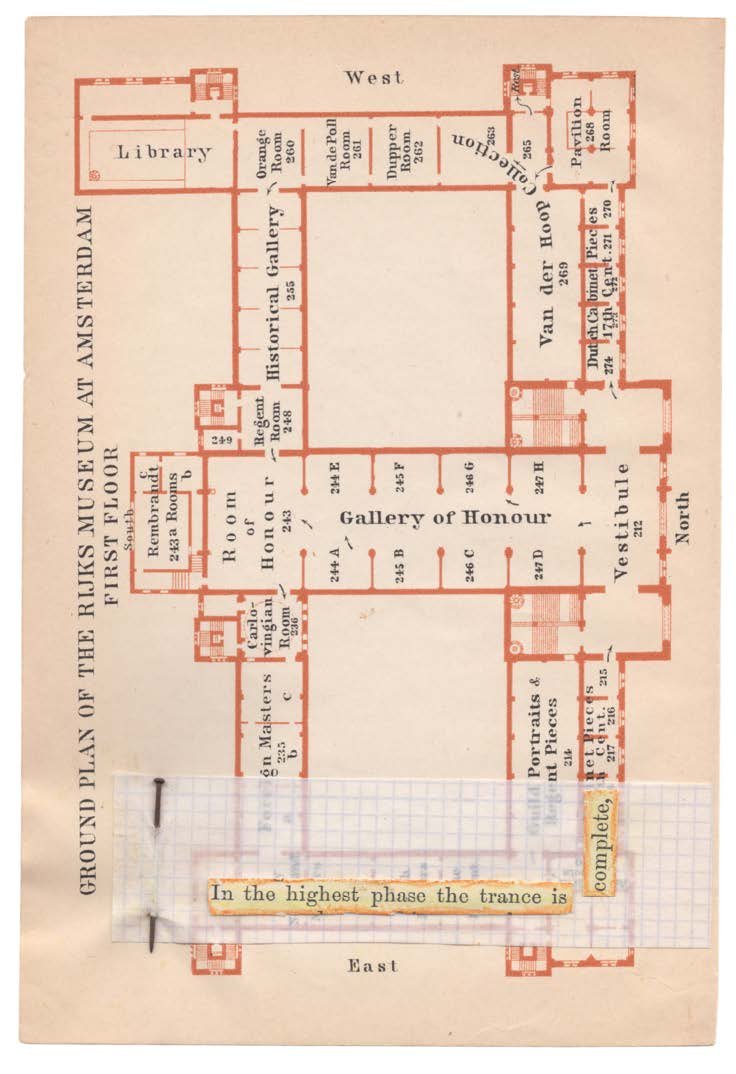ABOUT ESTAR(SER)
GALLUCCI TULL is pleased to be handling the unusual account of the international research association known as ESTAR(SER). The “Esthetical Society for Transcendental and Applied Realization (now incorporating the Society of Esthetic Realizers)” is an established collective whose diverse practice (performance, installation, text, image, sound, archive, dream) centers on ATTENTION — the shifting experience of sensory and cognitive choreography; the technologies and counter-technologies of conscious focus. Operating as an ambiguously historical “Learned Society” of “Scholars,” the artists of ESTAR(SER) have built a distinctive body of work over the last decade, with exhibitions and interventions at a host of significant international venues, including: Manifesta 11 (Zurich), the Palais de Tokyo (Paris), MoMA PS1 (NYC), the 33rd São Paulo Biennial (2018), the Milan Triennial, the Guggenheim (NYC), and the Institut für Raumexperimente (Berlin). Drawing on conceptual traditions that run through Fluxus, Oulipo, and the ’Pataphysicians, and aligned with contemporary metafictional practices like Walid Raad’s “Atlas Group” and Jim Shaw’s “Oism” (crossed with the psychophysical experimentalism of artists like Lygia Clark and Matt Mullican), ESTAR(SER) creates conditions for participatory encounters with the strange power of activated perception. www.estarser.net
ON COLLECTING THE WORK OF ESTAR(SER): A CURATORIAL NOTE
ESTAR(SER) presents itself as a scholarly body with a longstanding history of research into radical attentional practices in general. In practice, though, much of their work centers on efforts to uncover the mysterious workings of a very specific group of “attentionauts”: the cultic-ludic cohort of “mad aesthetes” known variously as the Avis Tertia, the “Order of the Third Bird,” or, sometimes merely, “the Birds.” This playful band of philosophical tricksters has, apparently, threaded its way through the history of art and spectatorship, gathering again and again (around the world and across the last two centuries) to perform insurgent acts of durational, immersive, and collective attention — often, although not always, to works of art in a traditional sense. Irreverent, marginal, evasive, the Birds have made endless trouble for the established ideologies of art-appreciation, and worked to undermine the shifting regimes of attentional commodification and spectacularity. Importantly, however, the Birds do not, it appears, wish for their activities to be subjected to historical or critical scrutiny. For this reason, ESTAR(SER) confronts a distinctive challenge: the “scholars” of ESTAR(SER) operate in a perpetual archival agon of cat-and-mouse research; they forever try to do their careful work of historical recovery, only to learn that they have been foiled or gamed by their quarry, which has tweaked their noses with false leads, forged documents, and sophomoric raids on the library of Birdish sources (a repository known as the “W-Cache”). Many such stories are documented in the Proceedings of ESTAR(SER), the serialized “academic journal” of this research community, or in the giant recent compendium of reprints from that organ: Burnett, Hansen, and Smith, In Search of the Third Bird (London: Strange Attractor / MIT, 2021). This elaborate frame tale has implications for institutional and individual collectors interested in the work of ESTAR(SER). As a self-consciously scholarly body, ESTAR(SER) disavows the merchandising of its material culture. What it possesses (documents, images, objects) constitutes a research archive which it conserves for the purposes of scholarship on the Avis Tertia. The sale of materials, for which ESTAR(SER) considers itself custodially responsible, would be obviously inconceivable. And yet, it has long been the case that careful work in the “W-Cache” archive consistently reveals evidence of its corruption — by the Birds themselves. Which is to say, in their ongoing efforts to throw ESTAR(SER) scholars off their trail, gamesome associates of the Birds continuously insinuate fake objects and documents into that collection. When such “inauthentic” works are revealed, a special subcommittee of ESTAR(SER) works speedily to authorize DEACCESSION, and all such materials (voided of scholarly value) may be acquired on the open market — often at a steep discount; even, sometimes, for less money than ESTAR(SER) paid to acquire them. Ironically. GALLUCCI TULL can assist interested parties in securing these unusual artifacts, a number of which are presented in this online viewing room.
RECENT PRESS
Allen, Ken. "A Review of THE THIRD MEANING." ASAP/J: The Journal of the Association for the Study of the Arts of the Present (28 March 2024).
Duarte-Riascos, Jerónimo. “In Search of the Third Bird.” Brooklyn Rail (November 2022).
Ekstrand, Anna Mikaela. "Flying the Coup: The Order of the Third Bird Exhibit in New York." Fine Art Globe (15 July 2024).
Gratza, Agnieszka. “Letter from Seattle (on ‘Talking Birds’).” Art Monthly 470 (October 2023).
Heller, Nathan. “The Battle for Attention.” The New Yorker (29 April 2024).
Massot, Josephina. “Fact, Fiction, Avis Tertia.” Los Angeles Review of Books (17 July 2022).
Schmidt, Peter. “A Room in Four Phases.” Cleveland Review of Books (3 January 2023).
Spriggs, Hermione. “Drawing into Being.” Journal of Material Culture 24, issue 6 (2019): 1-20.
The Glasgow International. “On ESTAR(SER).” Encounters (podcast series, episode 9, 2021).


















